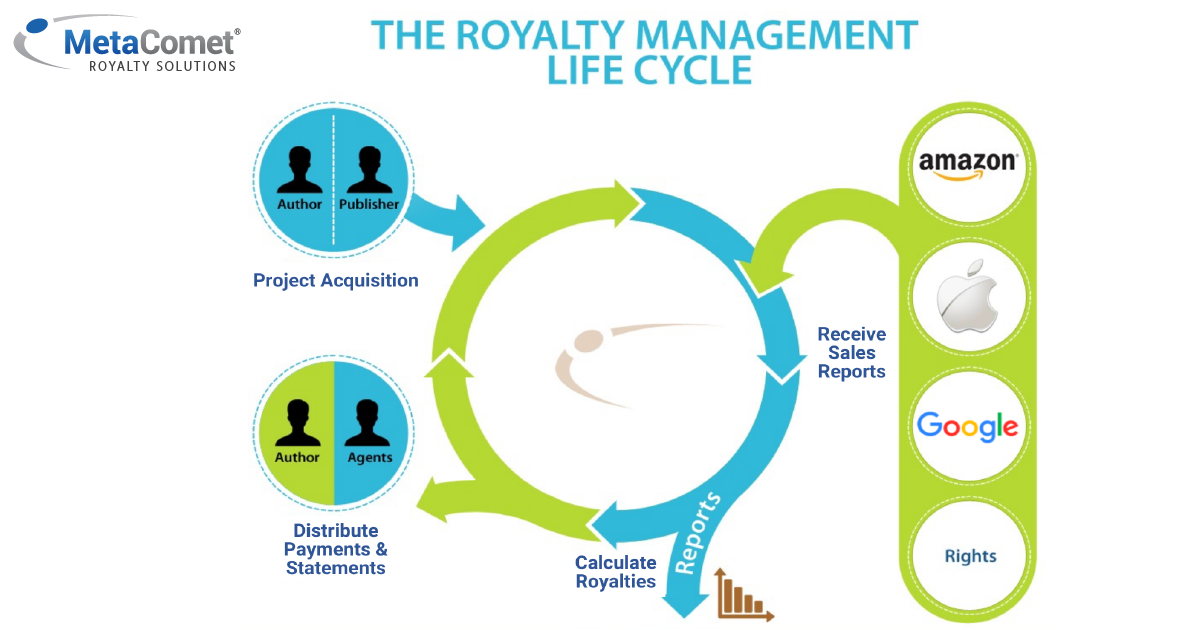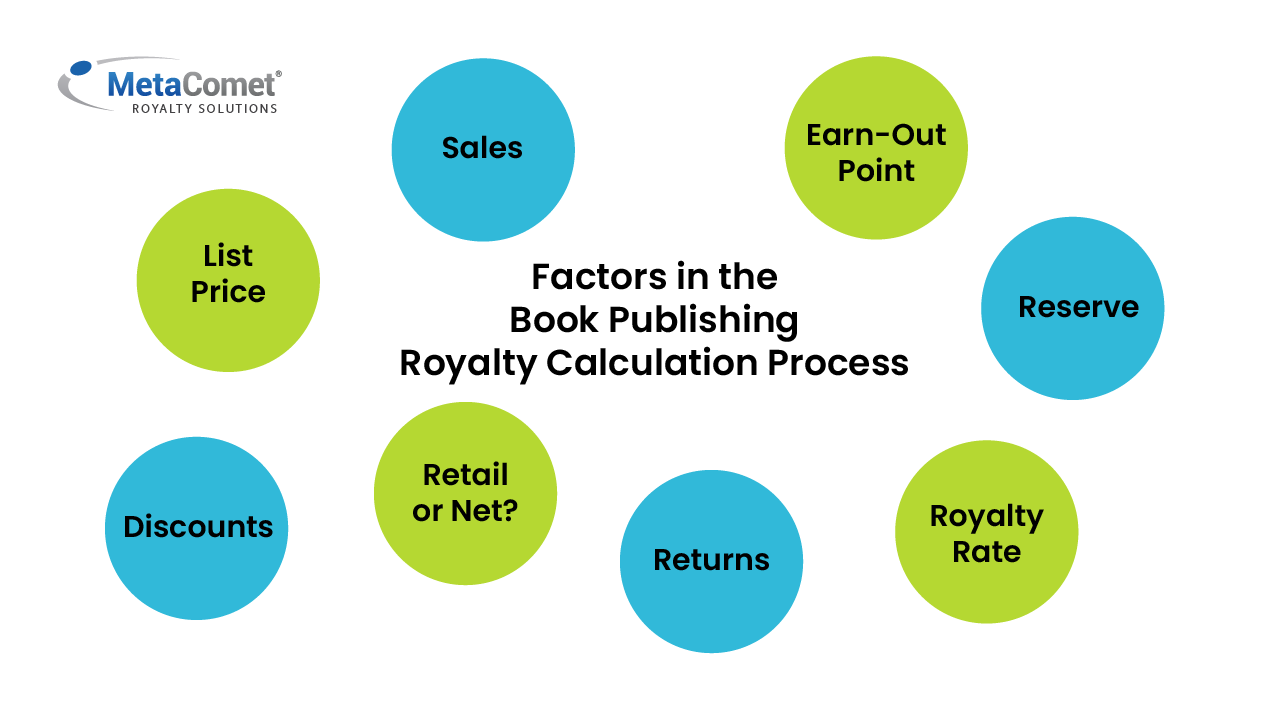No Results Found
The page you requested could not be found. Try refining your search, or use the navigation above to locate the post.
The page you requested could not be found. Try refining your search, or use the navigation above to locate the post.
Royalty records management might be the most confusing part of your business. Mistakes here can cost you money and damage your recipient relationships. To clarify this intimidating process, the MetaComet® team has created the Royalty Management Lifecycle™ model.
The Royalty Management Lifecycle™ breaks the process into 4 distinct phases: acquisition, sales, royalty calculation and reporting, and distribution of payments and statements. By looking at each step individually, you can identify opportunities for efficiency and avoid many pitfalls that come by the overwhelming complexity of doing it all at once. Managing the complete process becomes seamless when Royalty Tracker® automates every phase of the royalty management lifecycle with precise royalty calculation.
The breakdown also suggests useful tools that will help you make major improvements to each phase of royalty records management.
Watch this video to learn more about what opportunities and dangers the Royalty Management Lifecycle™ model exposes, and read on for more information about the royalty calculation process.

The Royalty Management Lifecycle outlines the 4 key steps of royalty processing:
Acquisition, sales, royalty calculation, distribution – why manage each phase of the royalty management lifecycle manually when our Royalty Tracker® automates them all seamlessly? Transform your calculation process instantly. Get your free consultation now.
The calculation of royalties involves a detailed process influenced by multiple factors. Each company has its own rules, which differ based on their unique agreements with recipients.
For instance, the factors involved in the royalty calculation process for a book publisher are likely to include:
For more information about these factors and terms, please see our articles on 15 Frequently Asked Questions About Book Publishing Royalties or Publishing Royalties 101.
Royalty rates can differ significantly depending on the business model.
For example, in “hybrid” book publishing, both publishers and authors share the production costs, which often results in higher royalty rates. For instance, authors might earn between 50% and 90% of net sales.
Conversely, traditional publishing models involve the publisher assuming most of the financial risk, leading to lower royalty rates. For ebooks, this might be around 25% to 50% of net sales, while paperback royalties are typically around 10%. Hardcover book royalties usually reflect a percentage of the list price rather than net sales. Royalty rates can also fluctuate with discounted sales.
Additionally, in traditional publishing, publishers often acquire all rights to the content. This allows them to license the work for other uses, such as foreign markets or film adaptations, with subsidiary rights royalties generally set at 50%.
(See our article How Are Royalties Calculated? to learn more about the factors involved in negotiating royalty rates.)

Traditionally, companies referred to their royalty statements and issued checks one by one to their recipients at the end of each royalty period. Some small companies still process royalty payments this way, but most now generate payments through their accounting software and/or electronic payment platforms, issuing checks or electronic payments in a more consistent, efficient, and trackable process. The best royalty calculation software will automatically generate payment files that can be directly uploaded to the user’s accounting and/or payment software.
Regular financial audits are a necessary part of doing business: business partners, investors, tax agencies, and your royalty recipients all need to see proof of accurate, honest, and legal financial calculations and record-keeping. Therefore it’s crucial that all sales data, royalty calculations, and royalty payment information is kept in a secure and easily accessible system.
As you can see, the royalty calculation process can be complex and challenging. The MetaComet® suite of royalty software tools automates the process and saves time, ensures accuracy, and eliminates stress for your royalty processing team.
Royalty automation can impact every step of the Royalty Management Lifecycle. For example:
If you’d like to see how MetaComet royalty calculation software can ease your workload and transform your royalty records management, contact us to schedule a demo today. We’ll show you how our solutions can be customized to meet your company’s needs and eliminate the stress around the royalty calculation process.

David Marlin is the President and Co-Founder of MetaComet® Systems, a prominent provider of royalty automation tools. Since founding the company in 2000, David has spearheaded the development of a suite of best-in-class systems that effectively facilitate royalty processes for nearly 200 publishers. David has also served as the chair for The Book Industry Study Group’s Rights Committee and Digital Sales Committee.
Before establishing MetaComet Systems, David served as a technology consultant for renowned publishers, collaborating with notable companies such as Random House, Penguin, HarperCollins, Holtzbrinck, Macmillan, Scholastic, Time Warner, and many others. David holds both an MBA and a BA from Columbia University in New York.
"*" indicates required fields